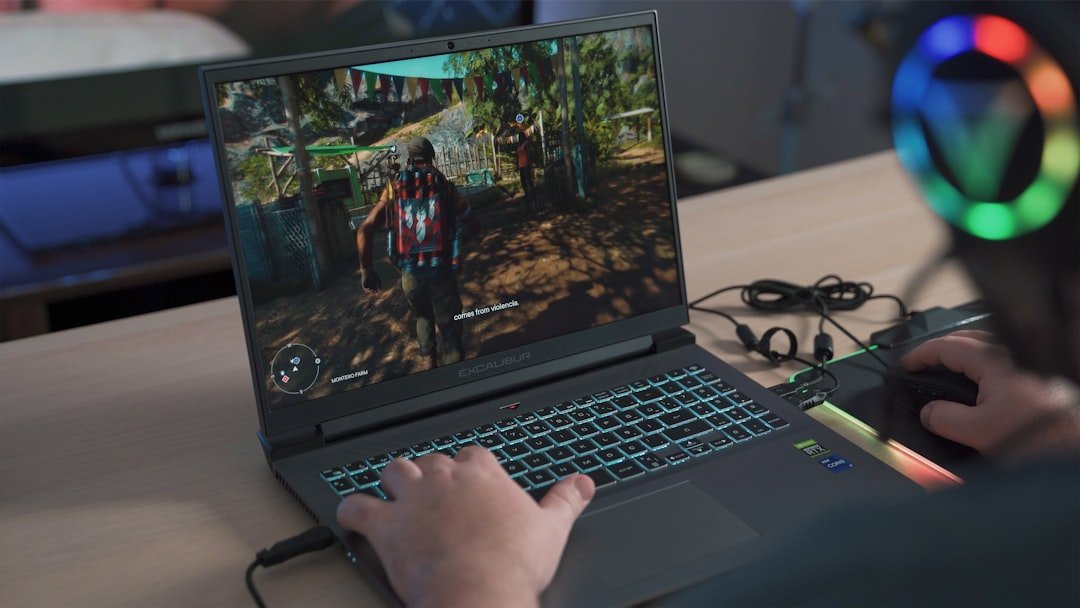Understanding CPU Overheating: The Basics
Let’s start with the fundamentals. What exactly is a CPU, and why does it get so hot? The CPU, or Central Processing Unit, is essentially the “brain” of your computer. It’s responsible for executing instructions and performing calculations. Think of it as the conductor of an orchestra, managing all the different components and processes. As the CPU works, it generates heat. This is a natural byproduct of its operation, much like how a car engine heats up when it’s running. The more complex the tasks, the more heat is produced.
Now, why is this heat a problem? Well, CPUs are designed to operate within a specific temperature range. If the temperature exceeds this range, the CPU can start to “throttle” its performance. This means it slows down to reduce heat generation, which can lead to sluggish performance, freezes, and crashes. In extreme cases, prolonged exposure to high temperatures can cause permanent damage to the CPU, leading to data loss and the need for costly replacements. According to Wikipedia, “Overheating can lead to a variety of problems, including system instability, data loss, and hardware damage.”
Wikipedia
So, how hot is too hot? The ideal operating temperature varies depending on the CPU model, but generally, you want to keep it below 80°C (176°F) under heavy load. Idle temperatures should ideally be between 30°C and 50°C (86°F and 122°F). However, always check your CPU’s specifications for the recommended temperature range. You can usually find this information on the manufacturer’s website or in the CPU’s documentation.
I remember the first time I built my own PC. I was so excited to get everything running, but I didn’t pay enough attention to the cooling. The CPU started overheating during a gaming session, and the system shut down. It was a frustrating experience, but it taught me the importance of proper cooling.
Identifying the Symptoms of CPU Overheating
How do you know if your CPU is overheating? Here are some common symptoms to watch out for:
- Frequent Crashes: If your computer crashes unexpectedly, especially during demanding tasks like gaming or video editing, overheating could be the culprit.
- Sluggish Performance: Is your computer running slower than usual? Overheating can cause the CPU to throttle its performance, leading to noticeable lag and delays.
- Unusually Loud Fan Noise: If your CPU fan is constantly spinning at high speeds, it’s likely trying to compensate for excessive heat. This can be quite noisy, sounding like a small jet engine.
- Unexpected Shutdowns: In severe cases, the computer may shut down automatically to prevent damage from overheating. This is a safety mechanism, but it can be disruptive.
- Error Messages: You might see error messages related to CPU temperature, such as “CPU Over Temperature Error” or “CPU Fan Error.”
If you experience any of these symptoms, it’s time to investigate the CPU temperature.
Common Causes of CPU Overheating After Installing a New Cooler
You’ve just installed a shiny new CPU cooler, and now your computer is overheating? That’s definitely not the outcome you were hoping for! Let’s explore some of the most common reasons why this might be happening.
Improper Cooler Installation
This is, unfortunately, a very common culprit. Even if you’ve installed a cooler before, it’s easy to make mistakes. Here’s what can go wrong:
- Incorrect Mounting Pressure: The cooler needs to make firm contact with the CPU to transfer heat effectively. If the mounting pressure is too low, there will be gaps between the cooler and the CPU, reducing heat transfer. If it’s too high, you could damage the CPU or motherboard.
- Uneven Mounting: If the cooler isn’t mounted evenly, some parts of the CPU might have good contact, while others don’t. This can lead to uneven heat distribution and overheating.
- Loose Screws or Clips: Make sure all screws or clips are securely fastened. Loose connections can compromise the cooler’s contact with the CPU.
- Incorrect Orientation: Some coolers have specific orientations for optimal performance. Double-check the instructions to ensure you’ve installed the cooler correctly.
I once spent hours troubleshooting a new cooler installation, only to realize I hadn’t tightened the screws enough. The CPU was getting scorching hot! Lesson learned: always double-check the basics.
Insufficient or Incorrect Thermal Paste Application
Thermal paste is a crucial component in the cooling process. It fills the microscopic gaps between the CPU and the cooler, ensuring efficient heat transfer. Here’s where things can go wrong:
- Too Little Thermal Paste: If you don’t apply enough thermal paste, there won’t be enough material to fill the gaps, leading to poor heat transfer.
- Too Much Thermal Paste: Applying too much thermal paste can also be detrimental. Excess paste can spread out and create an insulating layer, reducing heat transfer.
- Uneven Application: The thermal paste needs to be applied evenly across the CPU’s surface. If it’s not, you’ll have uneven heat distribution.
- Using Old or Low-Quality Thermal Paste: Thermal paste can degrade over time, losing its effectiveness. Always use fresh, high-quality thermal paste.
There are various methods for applying thermal paste, such as the “pea-sized dot” or the “spread” method. Experiment to find what works best for you, but always aim for even coverage.
Power Supply Issues
A new CPU cooler might draw more power than your previous one, especially if it has features like RGB lighting or a powerful pump (for liquid coolers). If your power supply isn’t up to the task, it might not be able to provide enough power to the cooler, leading to performance issues and potentially overheating.
- Insufficient Wattage: Make sure your power supply has enough wattage to handle all your components, including the new cooler. Use a power supply calculator to determine the recommended wattage.
- Faulty Power Supply: A failing power supply can deliver inconsistent power, which can affect the cooler’s performance.
Airflow Obstructions
Even with a great cooler, your CPU can overheat if the airflow inside your computer case is poor. Here’s what to check:
- Blocked Vents: Make sure the vents on your case aren’t blocked by dust, cables, or other objects.
- Poor Cable Management: Messy cables can obstruct airflow. Take the time to organize your cables, routing them neatly behind the motherboard tray.
- Incorrect Fan Placement: Ensure that your case fans are positioned correctly to create a proper airflow path. Intake fans should bring cool air in, and exhaust fans should expel hot air.
I’ve seen many cases where a simple cable management fix dramatically improved cooling performance.
BIOS Settings

Sometimes, the BIOS settings can affect the CPU’s temperature. Here’s what to consider:
- Fan Speed Control: Make sure the fan speed control in the BIOS is set correctly. You might want to set it to “PWM” (Pulse Width Modulation) mode, which allows the fan speed to adjust automatically based on the CPU temperature.
- Overclocking: If you’ve overclocked your CPU, it will generate more heat. Make sure your cooling system can handle the increased heat output.
- Voltage Settings: Incorrect voltage settings can also lead to overheating. If you’ve adjusted the CPU voltage, make sure it’s within safe limits.
Step-by-Step Guide to Fixing CPU Overheating After Cooler Installation
Alright, let’s get down to business. Here’s a step-by-step guide to troubleshoot and fix CPU overheating issues after installing a new cooler.
Step 1: Initial Assessment and Preparation

Before you start, take a deep breath and gather your tools. You’ll need:
- A screwdriver (preferably with a magnetic tip)
- A can of compressed air
- New thermal paste (if you suspect the old paste is the issue)
- A temperature monitoring program (like Core Temp, HWMonitor, or the software that came with your motherboard)
- Your computer’s manual (or access to it online)
Action:
- Power Down and Unplug: Shut down your computer completely and unplug it from the power outlet. This is crucial for safety.
- Open the Case: Carefully open your computer case. Refer to your manual if you’re unsure how to do this.
- Visual Inspection: Take a look inside. Are there any obvious signs of damage or loose connections? Is the cooler properly seated? Are the fans spinning?
- Boot into BIOS: Power on your computer and enter the BIOS setup (usually by pressing Del, F2, F12, or another key during startup – check your manual). Check the CPU temperature in the BIOS. This will give you a baseline reading before you load the operating system. If the temperature is already high in the BIOS, you know there’s a problem with the cooler itself.
Step 2: Checking the Cooler Installation
Let’s focus on the cooler itself.
- Inspect the Mounting: Carefully examine the cooler’s mounting mechanism. Is it securely attached to the motherboard? Are all screws or clips properly fastened?
- Check for Even Contact: Try gently wiggling the cooler. It shouldn’t move around. If it does, the contact might not be even.
- Remove and Reinstall (Optional): If you suspect the mounting is the issue, remove the cooler completely. Clean off the old thermal paste from both the CPU and the cooler’s base using isopropyl alcohol and a lint-free cloth. Reapply fresh thermal paste (more on this in the next step) and reinstall the cooler, following the manufacturer’s instructions carefully. Pay close attention to the mounting pressure and ensure it’s even.
I once had a cooler that seemed to be installed correctly, but the mounting pressure was too low. I had to tighten the screws a bit more to get good contact.
Step 3: Thermal Paste Application
Thermal paste is critical. Here’s how to apply it correctly:
- Clean the CPU and Cooler Base: As mentioned earlier, clean off the old thermal paste using isopropyl alcohol and a lint-free cloth. Make sure both surfaces are completely clean and dry.
- Choose Your Application Method: There are several methods, but the “pea-sized dot” method is generally recommended for beginners. Place a small, pea-sized amount of thermal paste in the center of the CPU.
- Install the Cooler: Carefully place the cooler back on the CPU, aligning it with the mounting holes. Secure the cooler according to the manufacturer’s instructions. The pressure from the cooler will spread the thermal paste.
- Avoid Air Bubbles: Try to avoid trapping air bubbles in the thermal paste. Make sure the cooler is making good contact with the CPU.
I’ve experimented with different thermal paste application methods, and the pea-sized dot has always worked well for me.
Step 4: Power Supply and Fan Checks
Let’s make sure everything is getting the power it needs and that the fans are working.
- Check Power Connections: Ensure that the cooler’s power connector is securely plugged into the correct header on the motherboard (usually “CPU_FAN” or “PUMP_FAN” for liquid coolers). Also, make sure the SATA power connector (if applicable) is connected to the power supply.
- Verify Fan Operation: Power on your computer and listen carefully. Can you hear the CPU fan spinning? If it’s a liquid cooler, is the pump running? You should be able to feel a slight vibration from the pump.
- Check Case Fans: Make sure all case fans are spinning and that they’re positioned correctly to create good airflow.
- BIOS Fan Settings: Go back into the BIOS and check the fan speed settings. Make sure the fan is set to “PWM” mode for automatic speed control.
Step 5: Software Monitoring and Testing
Now, let’s use software to monitor the CPU temperature.
- Install a Monitoring Program: Install a temperature monitoring program like Core Temp, HWMonitor, or the software that came with your motherboard.
- Monitor Idle Temperatures: Boot into your operating system and let the computer sit idle for a few minutes. Check the CPU temperature. It should be within the normal range (30-50°C).
- Run a Stress Test: Run a CPU stress test to simulate a heavy load. You can use programs like Prime95 or OCCT. Monitor the CPU temperature during the stress test. If the temperature exceeds 80°C (or the recommended maximum for your CPU), you still have a problem.
- Monitor Performance: While running the stress test, monitor the CPU’s performance. If it’s throttling (slowing down), the temperature is too high.
I always run a stress test after installing a new cooler to make sure everything is working correctly. It’s better to catch any issues early on.
Step 6: Troubleshooting and Further Steps
If the CPU is still overheating after following these steps, here are some further troubleshooting steps:
- Check for Driver Issues: Make sure your motherboard drivers and CPU drivers are up to date. Outdated drivers can sometimes cause performance issues and overheating.
- Check for Malware: Run a full scan with your antivirus software. Malware can sometimes consume CPU resources and cause overheating.
- Inspect the Power Supply: If you suspect the power supply is the issue, try testing it with a power supply tester or replacing it with a known good unit.
- Re-evaluate Airflow: Double-check the airflow inside your case. Make sure the fans are positioned correctly and that there are no obstructions.
- Consider a Better Cooler: If you’ve tried everything else and the CPU is still overheating, you might need a more powerful cooler. Consider upgrading to a higher-end air cooler or a liquid cooler.
- Seek Professional Help: If you’re not comfortable troubleshooting the issue yourself, or if you’ve exhausted all other options, consider taking your computer to a qualified technician.
Common Mistakes to Avoid

Here are some common mistakes to avoid when dealing with CPU overheating:
- Not Reading the Instructions: Always read the instructions that come with your CPU cooler. They provide specific guidance on installation and mounting.
- Using Too Much or Too Little Thermal Paste: Applying the correct amount of thermal paste is crucial. Too much can be as bad as too little.
- Forgetting to Plug in the Fan: Make sure the CPU fan’s power connector is securely plugged into the motherboard.
- Ignoring Airflow: Proper airflow is essential for cooling. Make sure your case fans are positioned correctly and that there are no obstructions.
- Overclocking Without Adequate Cooling: Overclocking increases heat generation. Make sure your cooling system can handle the increased load.
- Not Monitoring Temperatures: Regularly monitor your CPU temperature to catch any potential issues early on.
Additional Tips for Best Results

Here are some additional tips to help you achieve the best results:
- Use High-Quality Components: Invest in high-quality CPU coolers, thermal paste, and power supplies. They’ll provide better performance and reliability.
- Clean Your Computer Regularly: Dust buildup can significantly reduce cooling performance. Clean your computer’s internal components every few months.
- Optimize Cable Management: Neatly organize your cables to improve airflow.
- Consider a Larger Case: If you’re building a new PC, consider a larger case with better airflow.
- Research Before You Buy: Before purchasing a CPU cooler, read reviews and compare different models to find the best option for your needs.
Benefits and Expected Outcomes
By following these steps, you can expect the following benefits:
- Reduced CPU Temperature: The primary outcome is a lower CPU temperature, bringing it within the safe operating range.
- Improved Performance: With a cooler CPU, your computer will run faster and more smoothly, without throttling.
- Increased Stability: Lower temperatures will reduce the risk of crashes and system instability.
- Extended Hardware Lifespan: Keeping your CPU cool will help extend its lifespan.
- Quieter Operation: A properly cooled CPU will require less fan speed, resulting in quieter operation.
Frequently Asked Questions (FAQ)

Here are some frequently asked questions about CPU overheating:
-
What is the ideal CPU temperature?
The ideal CPU temperature varies, but generally, you want to keep it below 80°C (176°F) under heavy load. Idle temperatures should ideally be between 30°C and 50°C (86°F and 122°F).
-
Why is my CPU overheating even at idle?
This could be due to a faulty cooler, improper installation, insufficient thermal paste, airflow obstructions, or incorrect BIOS settings.
-
Can a bad power supply cause CPU overheating?
Yes, a power supply that’s not providing enough power or is delivering inconsistent power can affect the cooler’s performance and lead to overheating.
-
How often should I replace thermal paste?
High-quality thermal paste can last for several years. However, it’s a good idea to replace it if you remove the cooler or if you notice a significant increase in CPU temperature.
-
When should I seek professional help?
If you’ve tried all the troubleshooting steps and the CPU is still overheating, or if you’re not comfortable working with computer hardware, it’s best to seek help from a qualified technician.
